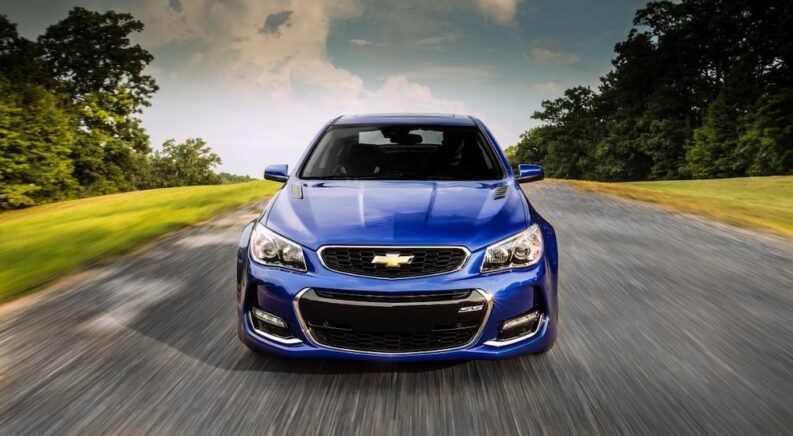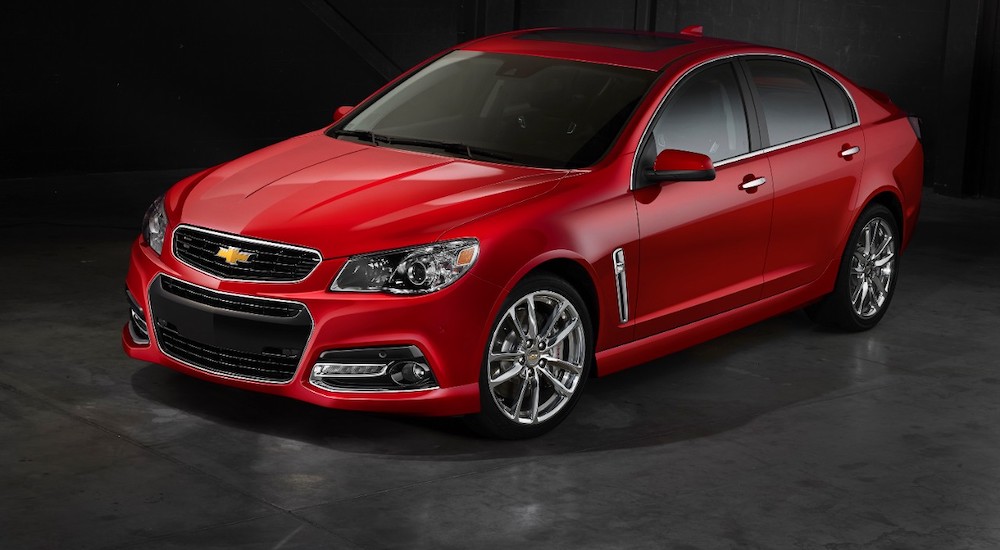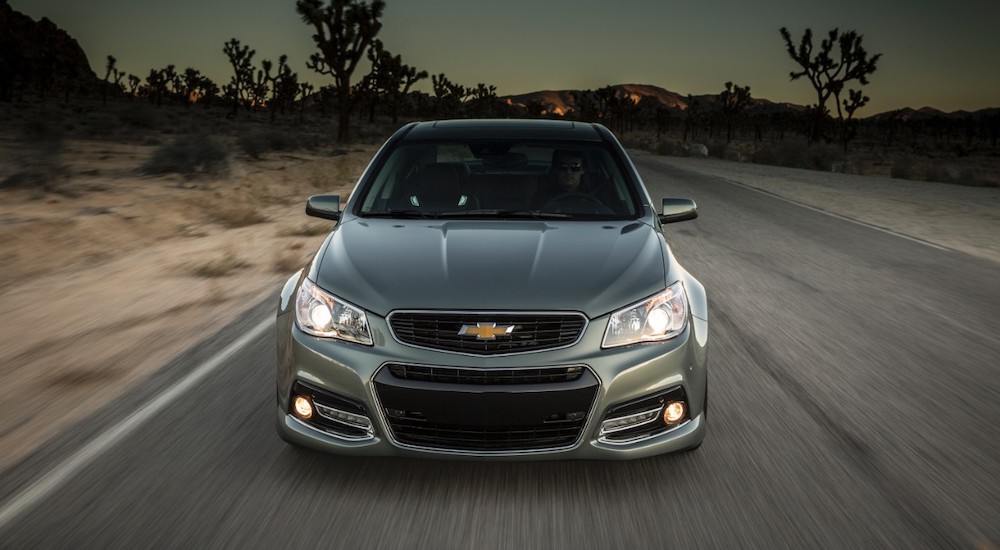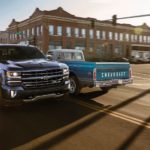If a friend has ever told you that they found a Chevy SS at a local used car auction or been giddy about finding an SS at a used Chevy dealership, you might have been confused for a moment because…you weren’t quite sure what an SS was. Every so often in automobile history, a great concept slips through the cracks. It’s a tale as old as time, really. How many genius products and inventions never quite got the attention they deserved? In fact, how many literal human geniuses just lived their lives in the shadows, toiling away at some ordinary, underpaid job? Life isn’t always fair, and that has (sort of) been the case for the Chevy SS.
While some of Chevy’s models and trims have walked a pretty straight line and had a clear trajectory to the top, the SS’s journey has looked more like one of those roller coasters with lots of loops, extreme high points, and eventually dangerous low points. Diehard Chevy enthusiasts have tracked the history of this interesting member of Chevy’s performance-based family. If you love to know about every performance vehicle Chevy has made, you should know about this package. Here’s a look at its bumpy ride.
What Exactly Is the Chevy SS?
The Chevy SS stands for Super Sport, and it began as a performance package available on several Chevy models starting in the 1960s. The first one available to consumers was the 1961 Impala SS. In 1958, Chevy released the Impala, a sophisticated and smooth-handling five-passenger sedan to its customers, and it was so instantly popular that Chevy started cooking up ways to boost its appeal even further.
By 1961, the SS package arrived with its V8 engine, power steering, heavy-duty shock absorbers, and other performance-oriented features. It also boasted some unique style details like red SS emblems on the rear fenders and trunk and red, white, and blue details on the hub caps. Chevy’s goal, from the start with the SS, was to offer a fun behind-the-wheel experience that could rival that of a sports car but in a “practical” everyday vehicle. And it was a nice concept, in theory (read on).
A Success Turned Sour… Then Sweet Again
At first, drivers loved the Impala SS. In fact, they loved it so much that Chevy started introducing the package to its other models. Throughout the 1960s, the top trim for many of Chevy’s vehicles was the SS. The El Camino and Camaro both had SS packages at one point. People loved it so much that there have even been rumors that people attempted to “fake” the Impala SS by essentially outfitting a regular Impala with many of the same upgrades of the SS and pretending it was an original Impala SS for resale value purposes.
Eventually, though, people grew tired of the SS. Some car historians say Chevy pushed it too hard, and it took on that undesirable feel of a trend. Additionally, by the 1970s, there was a pivot in consumer interest. People became more interested in comfort over performance, and the SS models, with their heavy-duty suspensions and performance tires, just lost popularity.
Stuck in the Middle Between Bland and Brilliant
If you ask some Chevy enthusiasts why they believe the SS died off, they would also say that SS models just sat in a weird place on the lineup. Chevy already had actual performance vehicles when they introduced the SS, like the Corvette. And the SS models of regular passenger vehicles didn’t quite compare to the available performance vehicles. So, it was hard for performance enthusiasts to justify going for an SS model of a more “regular” sedan when the Corvette was right there.
There was also the complaint that SS models didn’t look like performance vehicles. Most of their secret sauce was hiding beneath the hood and in the transmission, but they didn’t turn heads as they drove by. Culturally speaking, performance enthusiasts like onlookers to know they have a performance vehicle. So SS models just sat in this odd place where they weren’t exactly your standard commuter or family car, but they weren’t quite as impressive as true sports cars.
Chevy took a risk by walking that line—the odd hybrid space could have been exactly what made SS models soar or take a nosedive. As is the case with many great concepts, vehicle authorities and influencers have long loved the SS. In theory, offering a spirited behind-the-wheel experience to those who still need a “normal” car for everyday life is a great idea! And the SS models of the 1960s tended to deliver well in both categories: performance and comfort. They lived up to their promise. It just turned out to be a promise the public didn’t ask for.
A Return of the SS
For the 2014 model year, Chevy brought back the SS with a bang! Sort of. It gave drivers a new Super Sport sedan boasting a 6.2-liter V8 (the same one found in the Corvette of the same time period). The engine kicked out 415 hp and 415 lb-ft of torque. It was said to go from zero to 60 in roughly five seconds and gave drivers a six-speed automatic transmission paired with steering-mounted paddles. Between the transmission and paddle shifts, it created a nice balance between an everyday vehicle and a performance vehicle.
Those lucky enough to drive the SS that was out between 2014 and 2017 mostly said it was a lot of fun to drive. However, Chevy didn’t seem to learn from the style complaint of the earlier days of the SS. Many drivers say that the 2014 to 2017 SS just looked like a Chevy Malibu, and they wanted something that looked sportier. There was also the issue that the comparable Dodge Charger at the time cost significantly less and already had a long-standing name for itself.
Alas, between 2014 and 2017, only 10,000 SS models were made and sold. It’s said that Chevy only meant to release these as limited models, but one could see how a larger demand might have led to a larger output. It just wasn’t there, though.
But wait….
Chevy Is Adding SS Powers to EV Capabilities
Chevy will actually be offering an SS trim to its 2023 Blazer EV (which is delayed and will be out in the Spring of 2024, according to recent reports). So drivers can experience the powers of the SS in a fully electric SUV. This could be the perfect marriage of marketplaces because the Blazer has already been a favorite among those who need a family-friendly SUV but want a thrilling driving experience.
The SStory Isn’t Over
Sometimes, a product, person, or—in this case—vehicle comes along that is inherently brilliant, but the world doesn’t quite know what to do with it. The SS epitomizes that phenomenon. In the 1960s, Chevy identified that something was “missing” in their lineup. Their models were either strictly performance or strictly practical. So, they decided to create something that lived in between those two ends of the spectrum. The public didn’t respond the way they’d expected. But, the glimmer of genius was always there, which is why the SS has popped up several times throughout Chevy’s history. It won’t entirely disappear, and maybe it shouldn’t.
It will be interesting to see how drivers respond to the 2023 Blazer EV SS. It’s been the better part of a decade since Chevy last tried to revive the SS, and since consumer demands and sensibilities are constantly in flux, maybe this is the perfect time for the SS to shine.






